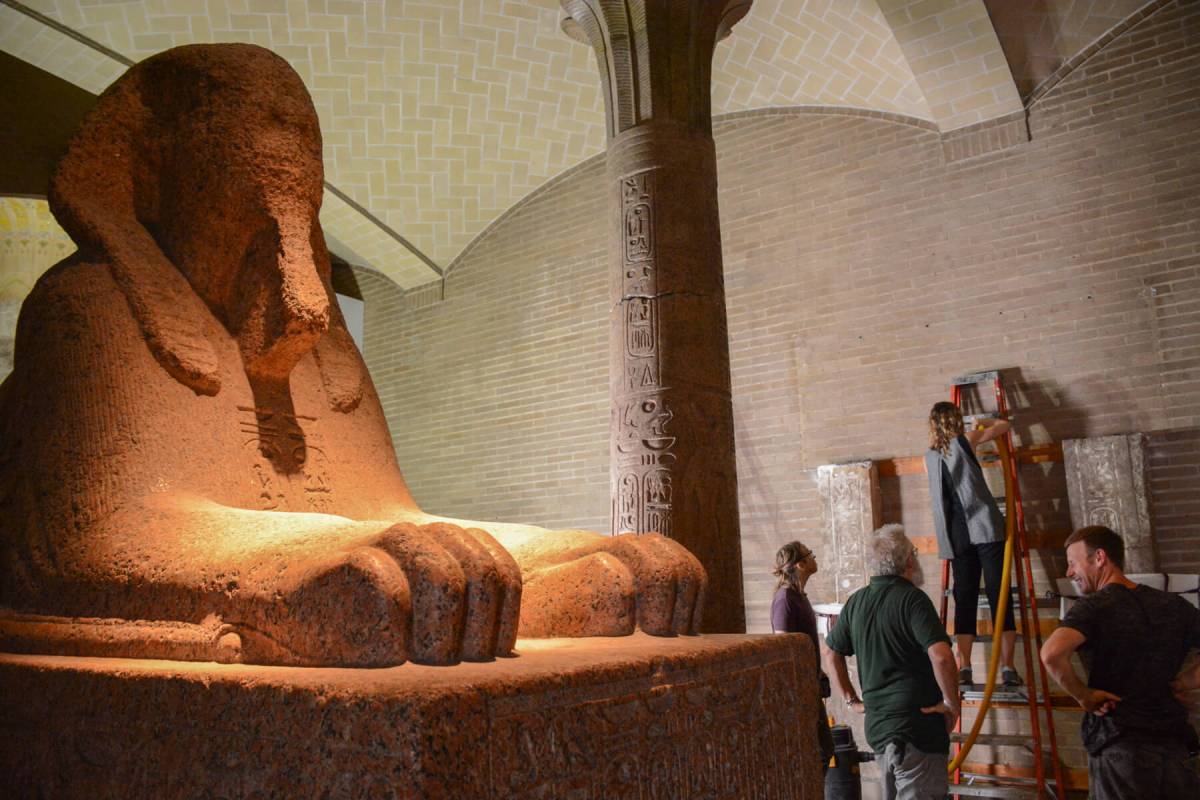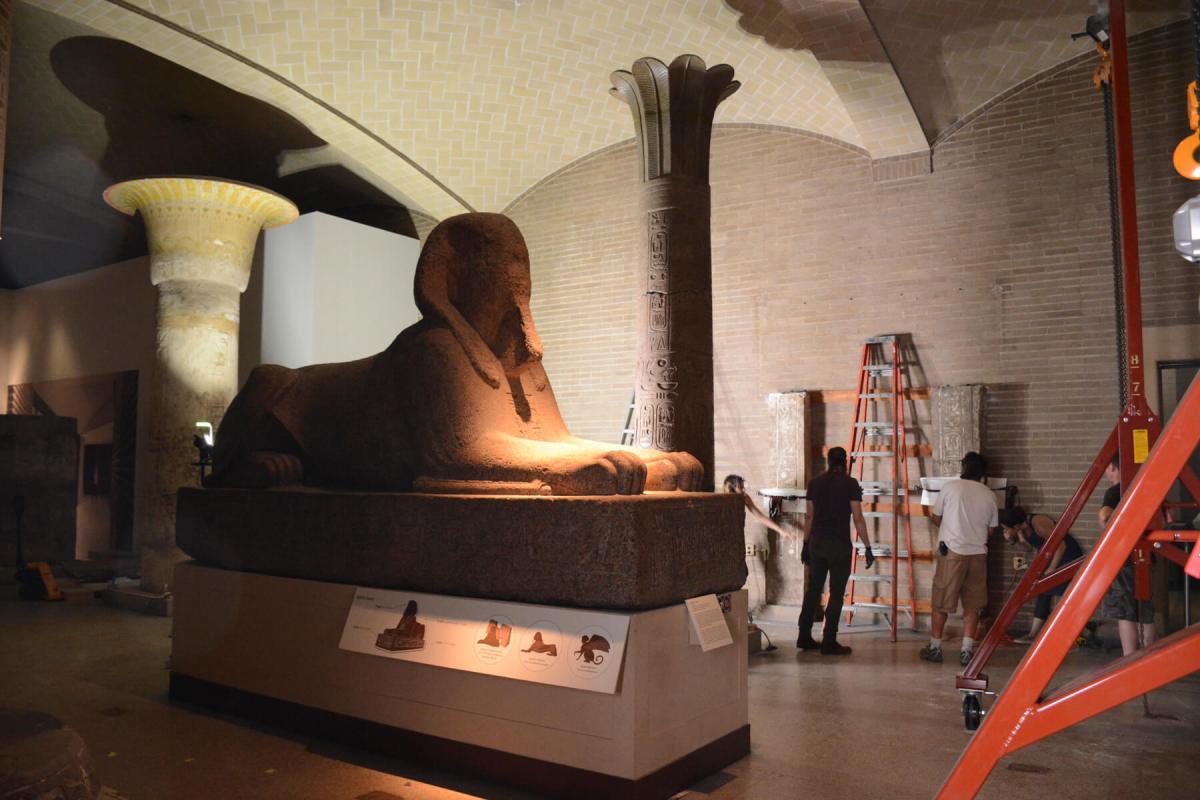The tallest Sphinx in the Western Hemisphere has moved.
On Wednesday morning, the statue was painstakingly moved to the Penn Museum’s main lobby from its Egypt Gallery, where it has resided since 1926.
“The Sphinx will serve as the centerpiece to the grand Main Entrance Hall, welcoming visitors to explore our outstanding collections that do much more than illustrate the past; they unlock the wonder of the human story to foster empathy, build connections, and create understanding in a complex world,” Julian Siggers, the Williams Director at the Penn Museum said in a statement.
“The Sphinx has long been our unofficial mascot; this move puts it front and center, as the anchor of our new visitor experience.”
So how does one move a 25,000-pound, over 3,000-year-old statue of Ramses II for the first time in almost a century? Good question. Prior to hauling the pharaoh, experts had a monumental amount of math and physics to calculate.
“There are a lot of factors contributing to the timing, including Philadelphia’s unpredictable weather, the historic nature of the building, and the inherent fragility of historic objects,” Project Manager Bob Thurlow said on the museum’s website. “We won’t know until we actually do it.”
Luckily, the move was a success.
Before moving the statue so much as an inch, the Sphinx had to be 3-D scanned to determine its weight and density to make sure the appropriate rigging equipment could be used. Museum officials strapped Ramses II to air dollies to move the ancient statue a grand total of about 250 feet through a labyrinth of doorways, windows, sharp turns and tight spaces in order to arrive at its new home in the museum’s interior courtyard.
The Sphinx of Ramses II, history’s most well-known pharaoh who reigned in ancient Egypt for nearly 67 years and fathered more than 100 children, arrived by boat at Port Richmond on October 7, 1913 during the World Series. It was taken from the Temple of the God Ptah at Memphis, Egypt, and was shipped up the Delaware River by a German freighter before it was unloaded onto a rail car using a massive crane at the Philadelphia and Reading Railway Company cargo terminal.
On October 19, 1913, the Sphinx reached the Penn Museum via horsedrawn carriages and caused enough commotion to completely captivate the attention of sports fans from the Penn-Brown football game which was underway across the street at Franklin Field.
“The sphinx weighs about 25,000 pounds. So what’s the equivalent of that? Well, that’s about 12 Liberty Bells, 87 Philadelphia Phanatics and 64,000 cheesesteaks,” Siggers told CBS Philly.

































